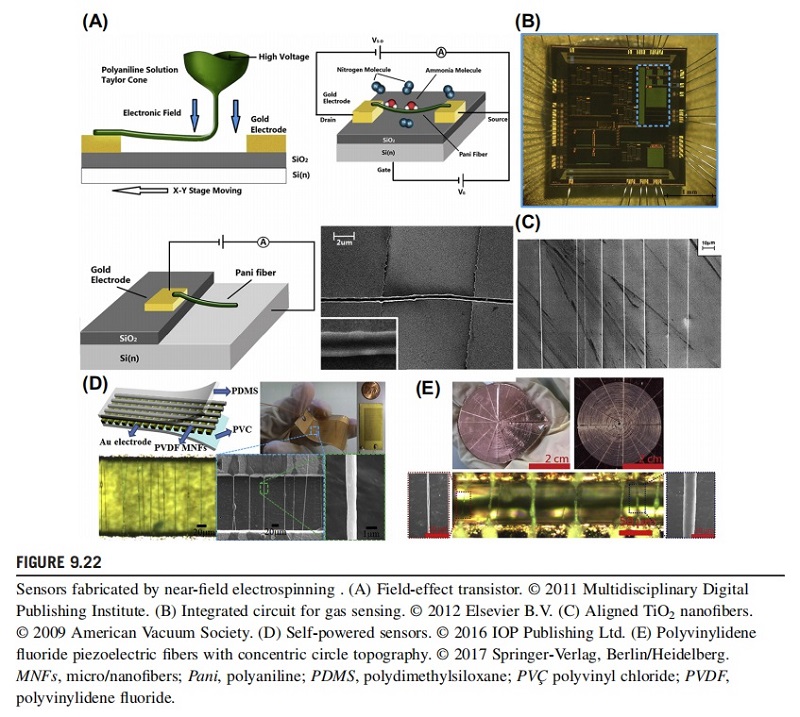In recent years, 1D nanostructures such as nanowires and nanotubes have been prepared for gas sensors. Chen et al. fabricated a single polyaniline nanofiber field-effect transistor (FET) by the method of NFES, as shown in Fig. 9.22A. The nanofiber transistor performs a 7% reversible resistance change to 1 ppm NH3 with 10 V gate voltage. During a cycle test, the gas sensor exhibited good resistance reversibility. Ruggieri et al. prepared 1D N-doped TiO2 nanowires with length of 3-4 mm and diameter of 300-500 nm, which were applied on a suitable analog electronic CMOS integrated interface designed for resistive gas sensors as shown in Fig. 9.22B. As a versatile material, TiO2 is sensitive and very stable toward exposure to many gases. Rinaldi et al. used NFES to obtain highly ordered TiO2 fibers over a large area, which was helpful to control the spatial orientation. Well-aligned TiO2 nanofibers with diameter of 200-400 nm can grow onto a silicon dioxide substrate, as described in Fig. 9.22C. This work provides an effective way to explore the interesting properties and applications of 1D electrospun nanofibers.


